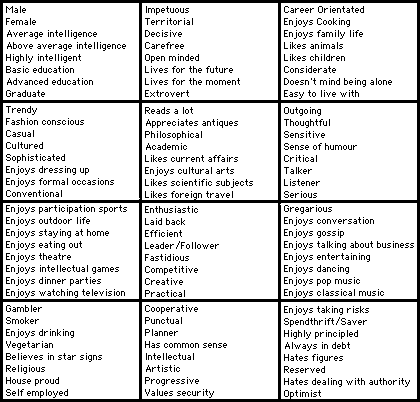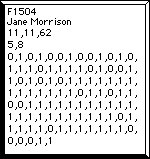
Chapter 12
Enhancing the human brain
Creating a clone
In 1993, I decided to test out these ideas in real life. I advertised in my local newspaper for single people looking for partners to try out a computer experiment where they could use a personal digital agent in a computer program designed to bring compatible people together. The experiment involved each participant creating a digital clone of themselves to mix with other clones to search for optimum partners.
To create the clones, a questionnaire was devised to allow people to provide various details about themselves. Besides the obvious physical and tangible characteristics, the questionnaire also carried many questions that might provide clues as to their attitudes and personalities. This questionnaire is shown in figure 12.5.

Figure 12.5
An example of the personality and attitude questions on the questionnaire. The responses to these questions are then turned into a binary string
The applicants were asked to tick the characteristics on this questionnaire they thought applied to them. From these responses, an array record could be created to correspond to the way people had answered the questionnaire. This record is shown in figure 12.6.

Figure 12.6
An example of the record that is created from a questionnaire. Besides carrying information coded for physical and tangible characteristics, it carries a series of binaries to indicate how a person had responded to the personality and attitude questions
Figure 12.6 is the computer record of a person called Jane Morrison. It codes for her age (born 11/11/62) and height (5 feet, 8 inches) together with her answers to the questionnaire that are recorded in binary form. It is effectively an electronic clone of this person, representing many of her physical characteristics, attitudes, tastes and preferences.